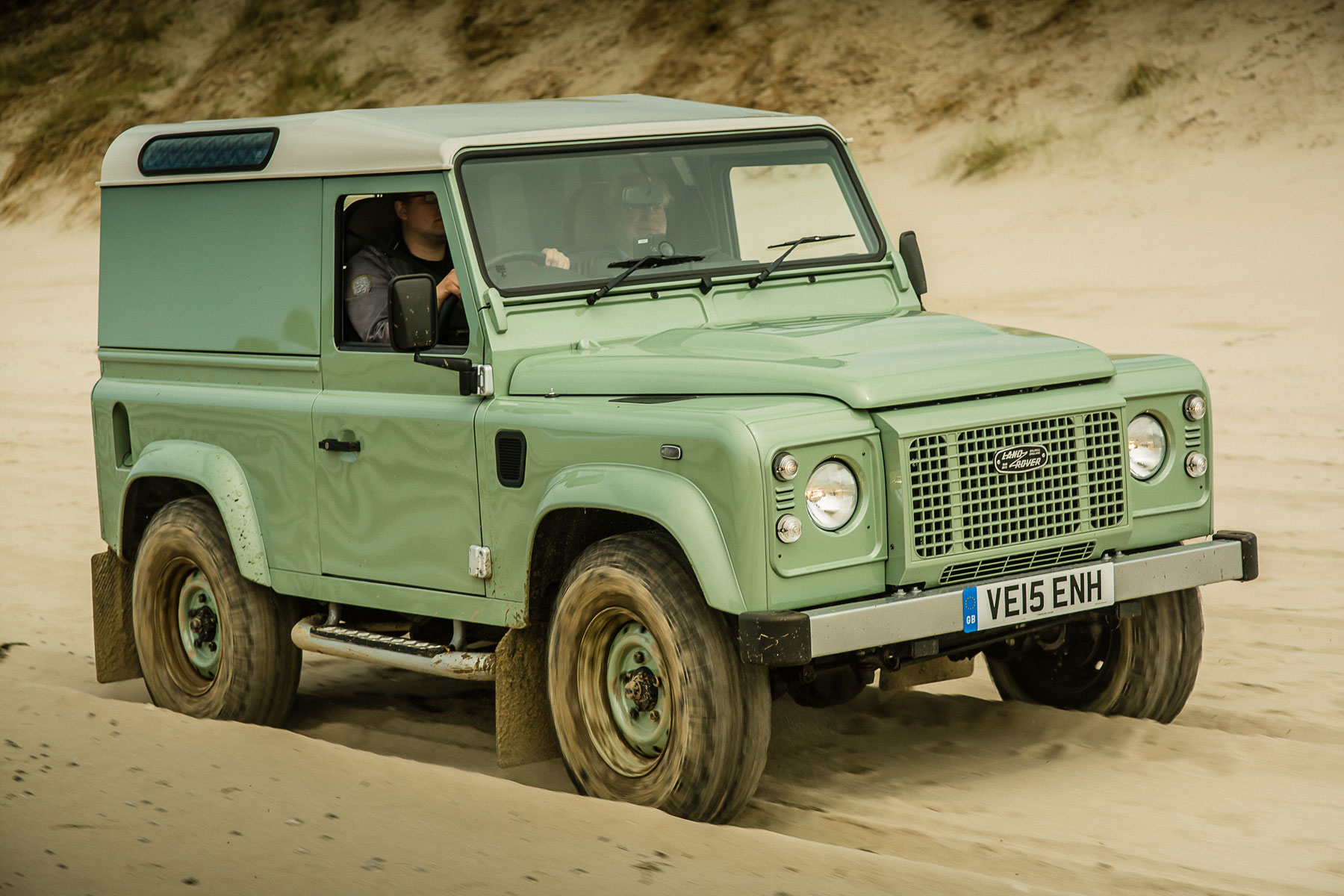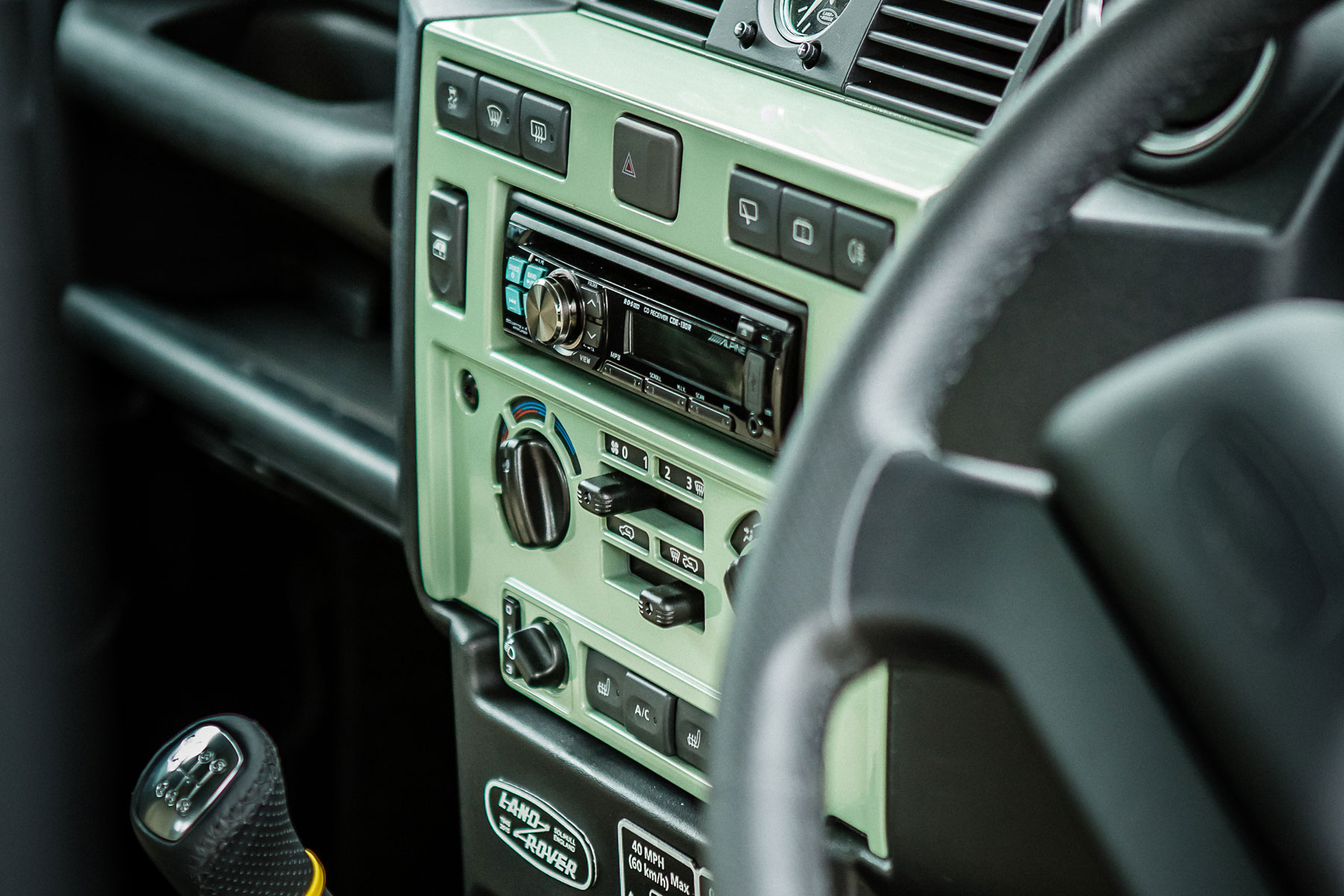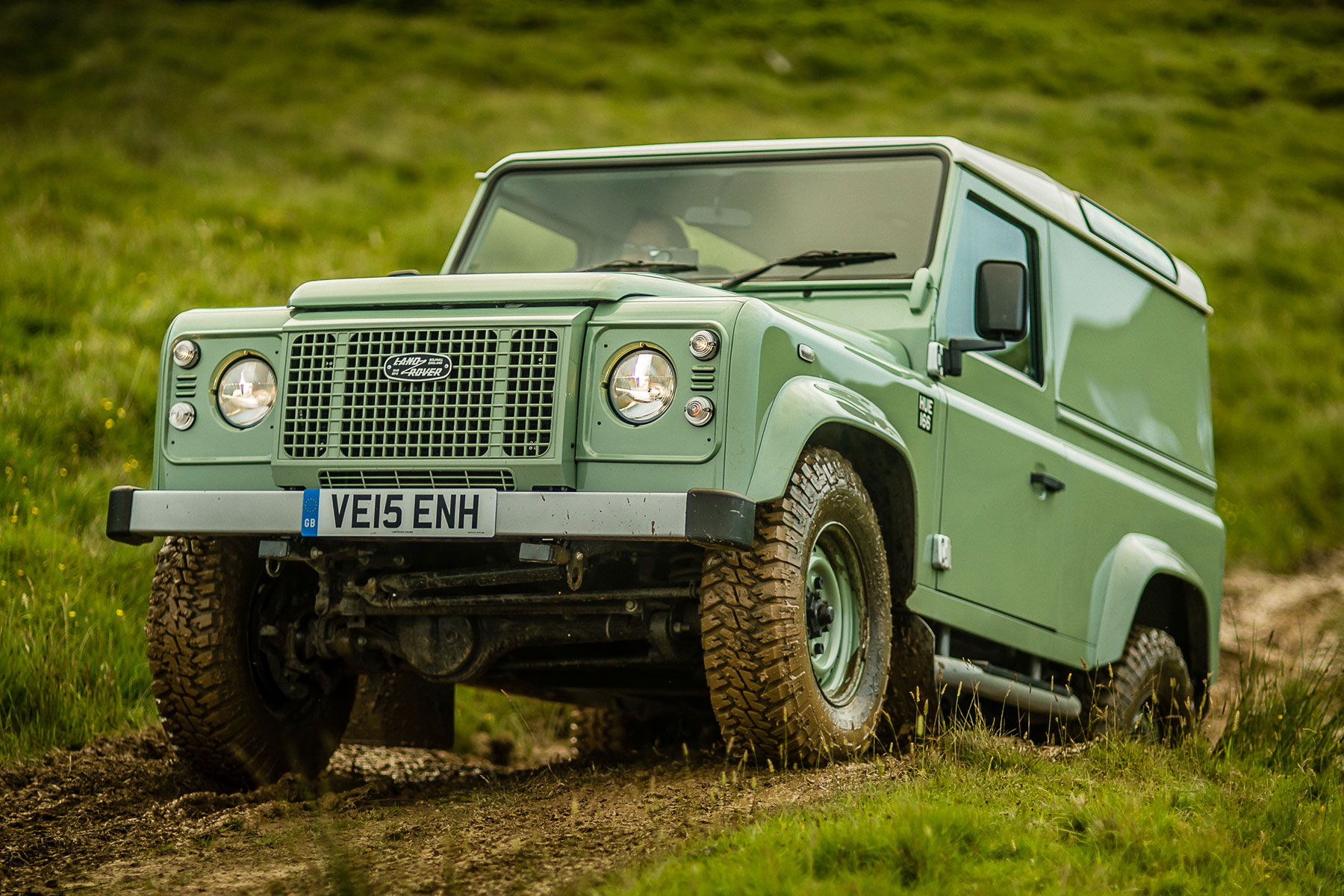2015 Land Rover Defender Heritage: Overview
The Land Rover Defender as we know it is ending production later this year. The manufacturer is keeping extremely tight lipped about what, if anything, is set to replace the iconic vehicle. But for now it’s cashing on the car’s heritage by launching a trio of special editions to see off the Defender.
This is the, er, Defender Heritage special edition. Finished in Grasmere Green, the Heritage is the cheapest of the limited-edition trio. Land Rover says it’s a modern interpretation of HUE 166 – the first ever Land Rover ever made back in 1948.
The cynical might call this Land Rover’s attempt at printing money. Many manufacturers introduce special editions as a model nears the end of its lifecycle, with fancy paintjobs and a few extras that’ll tempt punters to part with their cash.
But surely Land Rover doesn’t need to do that with a car as popular as its Defender? Everyone loves a Defender – even the Queen loves a Defender.
2015 Land Rover Defender Heritage: On the road
If anything, it’s amazing the Land Rover Defender has lasted this long. Driving a Defender is an experience, to say the least.
If you’ve never driven one before, it’s quite an intimidating experience. The steering wanders about like it has a mind of its own, while the awkward seating position makes everything feel a little odd.
The gears are in the wrong place, you sit far too close to the steering wheel (especially in the Heritage edition hard-top we drove, with its bulkhead preventing the seat being moved backwards). The pedals stick to the original brief that they can be operated by a driver in wellies. In fact, they’re probably best operated in wellies for maximum shoving power.
You probably don’t need us to tell you just how incredible the Land Rover Defender is off-road, though. Even the cockiest of drivers would run out of confidence before the Defender does.
With a bit of time, you’ll get used to the Defender’s character on the road, too. You can’t drive it like you drive an ordinary car, but with 122hp, the 2.2-litre turbodiesel is more rapid than you may expect.
It’s also surprisingly easy to manoeuvre around town. Good visibility, combined with a high-up driving position and lots of right angles, mean it’s easy to judge the situation and squeeze the Defender into tight gaps. Just don’t go expecting a black-cab turning circle – you soon get used to shunting back and forth to fit into parking spaces.
2015 Land Rover Defender Heritage: On the inside
Inside, splashes of Grasmere Green brighten up the Defenders normally dark cabin. There’s extra leather, notably on the steering wheel, while the padded cubby box is a welcome addition.
But don’t go thinking the Heritage is luxurious. There probably isn’t a vehicle that feels further away from the modern SUVs Land Rover also specialises in. The only thing it shares with a Range Rover is that commanding driving position.
The switchgear can be traced back to 1980s Rovers, while the Heritage’s heated seats are little more than a token gesture. But, like most things with the Defender, you quickly accept these quirks as part of its charm. On any other car, it just wouldn’t be acceptable.
2015 Land Rover Defender: Running costs
Yeah, running costs aren’t the Defender’s strong point, either. In fact, it’s the reason Land Rover is ending production of the Defender after all these years. It’s just not possible to tweak the emissions to bring them under ever-tighter EU regulations.
As such, the 2.2-litre turbodiesel Defender currently emits 266g/km CO2 and returns 28.3mpg. Even petrol 4x4s sip fuel at a slower rate than that these days, so a real-life fuel economy figure of mid 20s at best is poor for a diesel.
But Land Rover will point out that the Defender is eco-friendly in other ways. There’s a figure banding about that 75% of all Land Rovers ever made are still on the road, and most Defender buyers want them for their abilities. Think of it as a commercial vehicle rather than an SUV and it doesn’t look too bad.
2015 Land Rover Defender Heritage: Verdict
Journalists, enthusiasts and buyers alike have all been too kind to the Land Rover Defender for far too long. It’s old and outdated and really doesn’t belong in 2015. If you’ve never driven one before, you could well hate it.
But we’re going to let it off. Because we love it. It’s got more character than a country pub. Sure, it’s got its faults, but you learn to overcome them. No arm-room? Wind the window down and adopt the typical Defender arm-out pose. Noisy? Turn the radio up. Awful brakes? Press harder, and slow down using gears like in the olden days.
If you’ve got a spare £30,000 or so sitting in your bank account, go out and buy one. Not only will it be an investment, but it’ll provide as much fun as a supercar costing considerably more. And for heaven’s sake use it – whether it’s for taking the family for days out or finding out just how capable it is off-road. If you don’t, it’s wasted on you. Give it to me instead.
Specification: 2015 Land Rover Defender Heritage Edition
Engines: 2.2-litre TDCI diesel
Prices from: £27,800 (estimate)
Power: 122hp
Torque: 177 – 295lb ft
0-62mph: 14.7 – 15.7 seconds
Top speed: 90mph
Fuel economy: 25.5 – 28.3mpg
CO2 emissions: 266 – 295g/km




